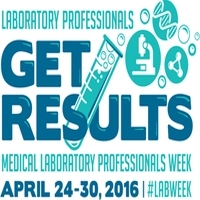There is a profession in the hospital you know nothing about. They’re one of the most underappreciated professionals in the healthcare community. These professionals are integral to the hospital running and are one of the most valuable members of staff. Who are they? Medical Laboratory Scientists. For those of you who don’t know, this week is Medical Laboratory Professionals week. It’s a time to honor more than 300,000 Medical Laboratory Professionals around the country who perform and interpret more than 10 billion laboratory tests in the US every year. Many people aren’t even sure of what they do.
What makes them so important? Medical Laboratory Scientists (also known by the following acronyms: MLS/CLS/MT/MLT) perform testing within a laboratory that’s reported to other healthcare professionals. When you get a yearly health checkup, they’re the people behind the testing that determine your results. They do analysis from simple to complex, are detectives that provide the information needed for a doctor to determine diagnosis, can draw your blood when you get an exam, and operate daily using more than a dozen pieces of complex electronic equipment. The machines they operate can cost millions of dollars. Doctors depend on these results to communicate to patients the next course of action (if any).
Scientists are essential for a hospital to function, and function well. They’re often perceived incorrectly in media. Have you ever considered the person running the test when you’re having health problems? It’s often a technologist in a laboratory. Shows like House or Grey’s Anatomy, for example, depicts the doctor’s running results, reading plates, and analyzing. Many physicians aren’t required to do that level of specialized training in their medical school curriculum, and often don’t do the testing affiliated with a scientist’s daily work. MLS professionals provide up to 70% of patients’ laboratory testing results to provide an accurate diagnosis.
Laboratory Professionals run genetic testing that can identify rare genetic diseases or accurately discover antibiotic resistant infections. They can find swine flu, cystic fibrosis, or match your blood type for an emergency surgery. Their existence is absolutely crucial to patient safety everywhere.
The Bureau of Labor Statistics projects a 16% average growth rate (the national average is half that) for Laboratory Technologists. They also recognize the need being greater to assist doctors in diagnosing medical conditions. It’s anticipated that they’ll remain in demand because of the growing population’s need for treatment.
Medical Laboratory Professionals are the unspoken heroes of the healthcare industry. The need for them is always growing. With over 10 billion laboratory tests in the US every year, it’s essential that laboratory professionals are recognized for their hard work, devotion to patient care, and thanked for their commitment to helping people. They’re saving the world – one slide at a time.

